The Ultimate Guide to Chatbot
• What is Chatbots, what are its importance and benefits
• What are different types of chatbots?
• How to choose the best chatbots for your business?
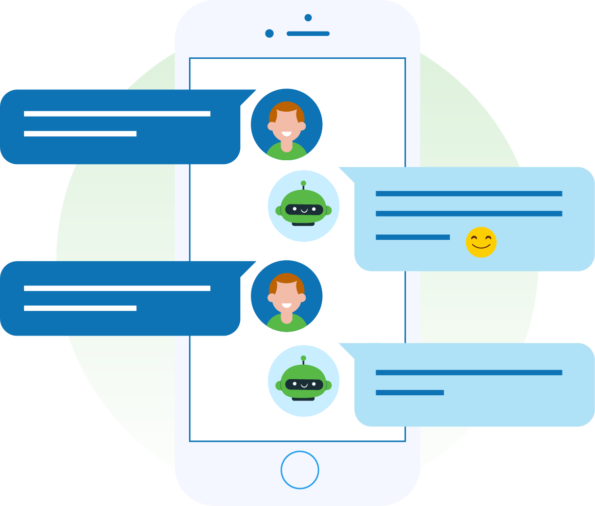
Content
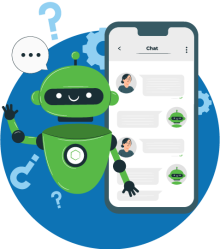
CHAPTER 1
Introduction to Chatbot

CHAPTER 2
Future of Chatbots
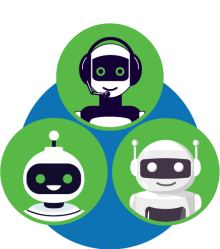
CHAPTER 3
Different Types of Chatbot
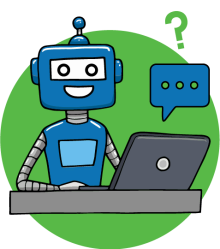
CHAPTER 4
How do Chatbots Work?

CHAPTER 5
Use-cases of Chatbots
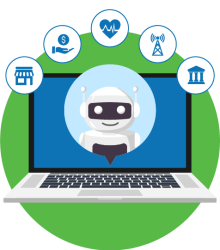
CHAPTER 6
Chatbots & Industries

CHAPTER 7
How to Choose the Best Chatbot for the Contact Center

CHAPTER 8
Checklist for Chatbots
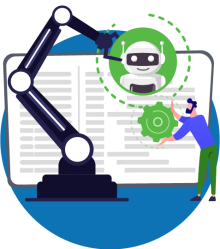
CHAPTER 9
NovelVox’s Stand on Chatbot Automation
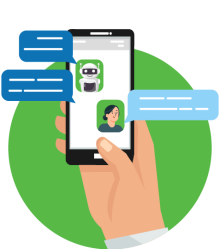
CHAPTER 10
Ready to Start Interacting with Customers with Chatbots - InfiBot?
Introduction to Chatbot
CHAPTER 1
What is Chatbot?
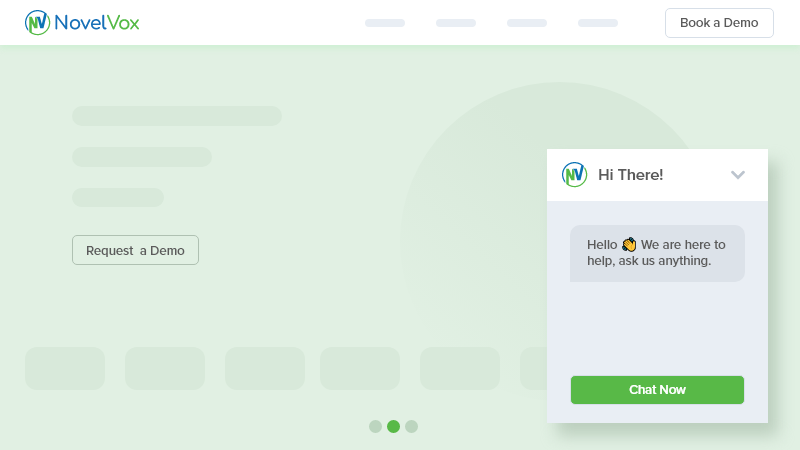
Brief History of Chatbot
Chatbot is not a modern invention, it has traced its history more than half a century ago. In their journey from the 1950’s, they have evolved in functionality, interface, and their significance to the business. Today chatbots are used as a customer interaction tool to support customer service functions. Here’s a detailed timeline breakdown that give you clear insights into chatbot history:
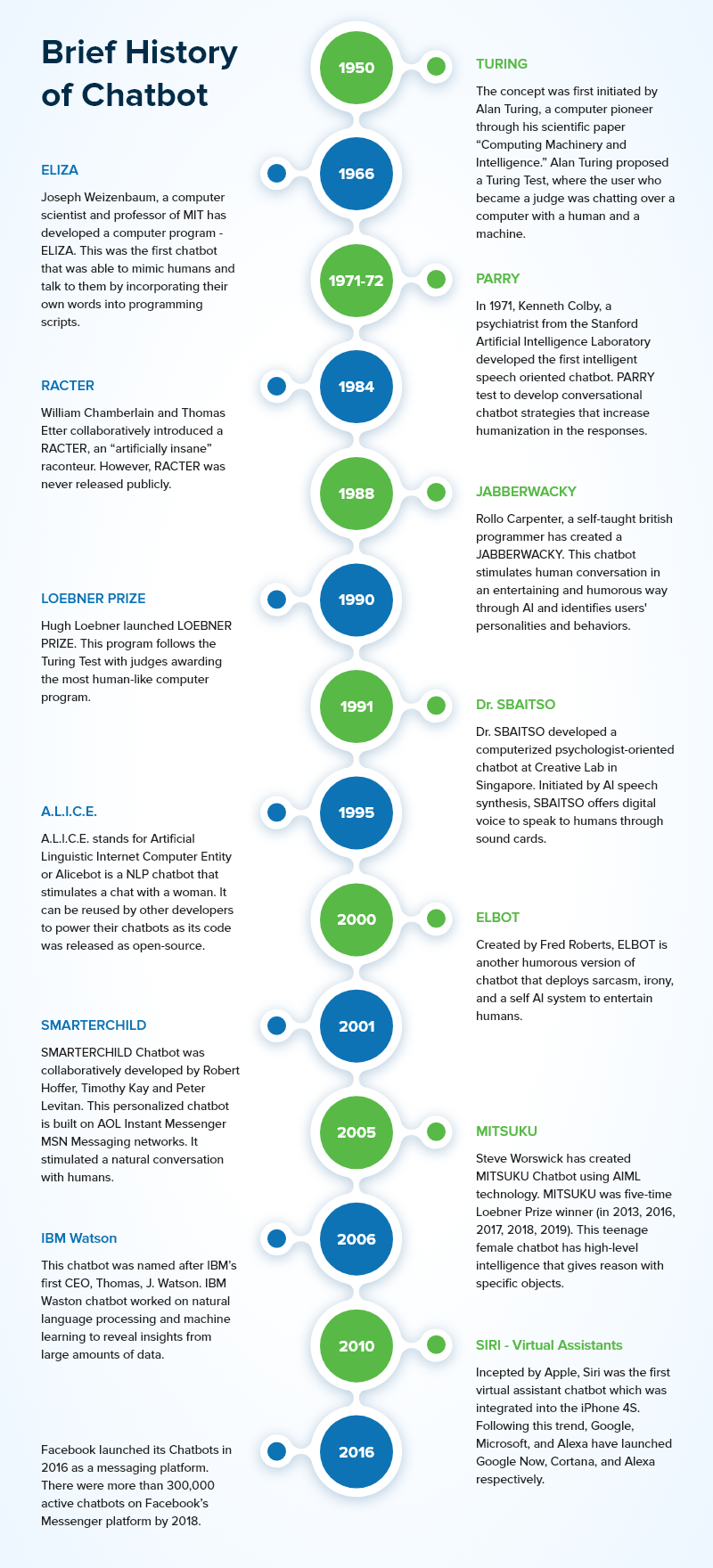
Elements of Chatbots
1. Interface
Interface is the place where the customer interacts with the bot. It is the UI where the chat session happens. Chatbots work both as a screen and voice assistants through Natural Language Processing (NLP). It maps the conversation from messenger apps or websites through voice assistants and responds in a more humanized manner.
2. Intellect
Chatbots work on intelligent programming that understands customer issues and responds accordingly. It learns with every interaction. Here, the bots are trained to reply to common problems (level 1 queries).
3. Integration
There are various integration challenges for modern contact centers. Chatbots work in sync with other applications or systems. From transactions to personalizing the experience to handling escalations to forwarding queries to human agents; chatbot integration makes it easy. Chatbot integrations ensure:
⦿ Seamless communications
⦿ Improved internal communications
⦿ Ease in collecting customer feedback
⦿Enhanced lead conversions
⦿ Improved customer support
Why is Chatbot Important?
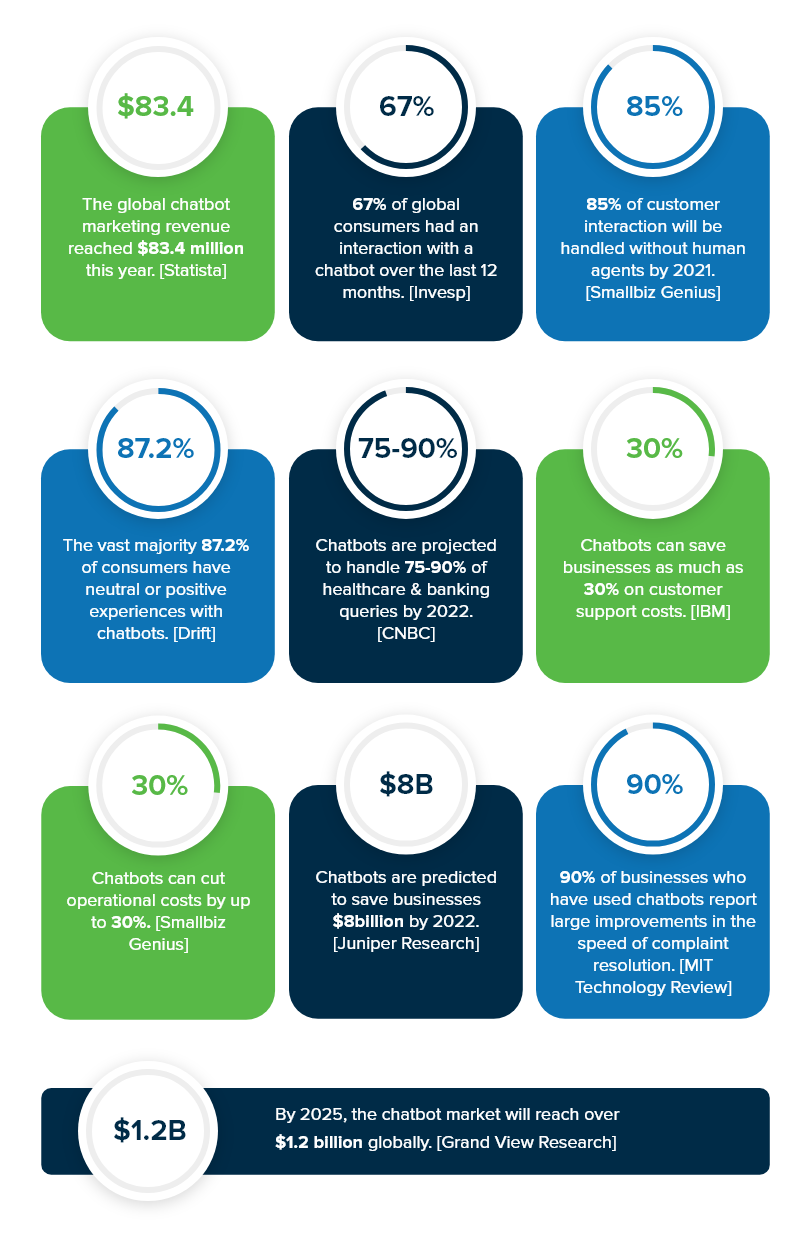
1. Enhance Customer Service
Chatbot enables you to not only hold real-time conversations with customers but also help you to improve your customer support services. The enhanced customer service can further improve customer experience and build brand credibility. Chatbots ensure round-the-clock support to your online visitors.
⦿ Extensive Customer Assistance
According to Econsultancy, in an e-Commerce shopping world, 83% of customers need your assistance during online shopping. They might need assistance to know more about products, or something related to payment, etc. Thus, in this scenario, you need chatbots to provide real-time assistance. Chatbots allow you to deliver customer-oriented content like images, videos, product pages, etc.
⦿ 24X7 Customer Support
Chatbots play a crucial role in improving customer support. Backed by AI programming, chatbots intelligently deliver automatic answers to the simple & repetitive questions. While answering complex and complicated questions, chatbots automatically forward the request to a real person. So, if a customer support agent is not available to answer the questions of customers, chatbot can provide an automated reply to the customers.
⦿ Proactive Customer Interaction
Conventionally, companies follow a passive customer interaction system in which they respond to customers when they are online or connected. With the inception of chatbot, companies are now indulged in proactive customer interaction. Now customer support rep or agents can interact with their customers anytime of the day. This will not only improve the level of your customer engagement but also delight your customers with a level ahead customer experience.
2. Boost Customer Engagement
3. Improve Lead Generation
4. Faster Access to Data for Real-time Guidance
Customers prefer channels that can quickly resolve their queries. With technological developments, modern chatbot capabilities have been delivering superior and quicker experiences. It combines various pieces of information and presents a unified view to customers for improving speed and efficiency. Thus, unified communication enables you to deliver seamless CX.
5. Generate Feedback to improve Digital Presence
What are the benefits of Chatbot?
For Business
1. Provides High level automation
Not every customer has a new question. There are some repetitive questions people look for a reply to such as, where is the business located? When are you operational? What are your services? Is there any discount? and so on. Instead of making an agent reply to these questions every time, you can make a chatbot do it. Automation of such repetitive tasks can reduce the workload of agents and improve agent productivity.
2. Streamlines the customer process
With chatbots in place, a customer does not require to repeat himself to the agent with his preference, nor he requires to sit and scroll to search for the product he needs. The customer is only required to mention his choice to a chatbot and this will be transferred to the required department. The chatbot remembers such information for future interactions.
3. Ensures improved CX
Chatbots streamline processes and customer interactions. The swiftness, accuracy, and
efficiency helps build higher customer satisfaction and loyalty. Most repetitive queries are
handled by chatbots that save customers from staying on hold for long. Chatbot even makes the customers come back to business with high hope for instant replies.
4. Boost operational productivity
For customer support agents, you need to define a shift time, monitor their presence and performance, check the pendency in their absence so that the business revenue is not hit. But in the case of chatbots, there is no such issue to handle. These are robots that can be accessed anytime and are never tired. They can operate continually all day long and obey the instructions. This improves customer experience and maintains the positive image of your brand.
5. Reduces call times
Shorter wait times will delight your customers and they are likely to remain loyal to your business. Being present 24×7 and handling common queries with ease enables agents to resolve complex queries faster and more. At the end of the day, everyone loves quicker resolution from an agent or a chatbot. Nowadays, businesses are leveraging WhatsApp Chatbots to quickly address customer queries.
For Customers
1. Ensures Excellent Customer Assistance
It offers excellent assistance to the customers who are visiting the website or looking forward to self-help. The customer does not require to call customer care, hear the IVR or hold the call to talk to the agent. It also reduces the average handle time.
2. Reduces waiting time
Chatbot interaction seems amusing to people, especially the unexpected funny reverts coming from the bots. Also, there is no wait time or urgency to close the chat early so that contacts can interact for a long time.
3. Ensures Omnichannel Engagement
Chatbots are not restricted to the website, it ensures omnichannel customer engagement benefits. Customers can have exceptional customer experience via phone, social media channels or more.
4. Ensures Personalized Options to customers
Customers or visitors do not need you to write the search query as chatbots can act on both text and voice inputs and outputs.
5. Works as Assistant
Chatbots even act like an assistant who can book appointments and remind the user of the same. The bot will store the information and communicate the same at the desired time as a personalized alert so the user does not miss anything. This can be done by sales chatbot, banking bot, e-commerce bot or even an intranet chatbot.
Future of Chatbots
CHAPTER 2
Not just live chat, now bots are there everywhere, whether Facebook or WhatsApp. Deploying a chatbot for your business is no more a tedious task, like setting up a nuclear station. Chatbots play a crucial role in delivering a better citizen experience. Companies offer chatbots that can be well integrated with your existing system to cater to your present and future needs.

Different Types of
Chatbot
CHAPTER 3
AI Chatbots
AI chatbots are conversational chatbots that stimulate human conversation through NLP (natural language processing) and tend to be more data-driven.
AI Chatbots learn from patterns and previous experiences i.e AI chatbots can understand those languages as well which are not pre-programmed and continue learning based on the inputs it receives. Furthermore, AI chatbots can make changes according to patterns and inputs they received based on the experience and new situations.
These chabots are personalized in nature that interact with customers like humans and provide personalized experience. As compared to rule-based chatbots, AI chatbots are more contextual and deploy Natural Language Understanding (NLU), Machine Learning (ML), and Sentiment Analysis to apply predictive intelligence and ensure a personalized user’s experience.
Over the past few years, implementation of AI chatbots in marketing have helped improve campaign performances and are expected to grow from $2.6 billion in 2019 to $9.4 billion by 2024.
If something goes wrong with the chatbot AI model it can be hard to optimize and improve alone. So, to implement AI chatbots, you require highly proficient human specialists and staggering amounts of training. The algorithms AI chatbots are leveraging are truly excellent and make AI chatbots an impractical choice for many leading enterprises.
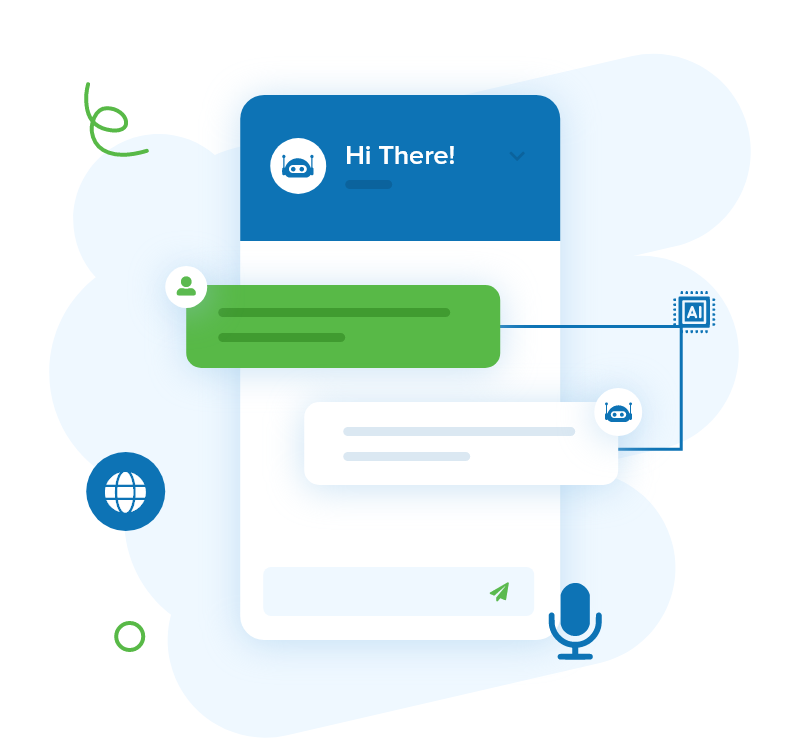
Rule-based Chatbot
Since Facebook launched its chatbot messenger platform, Rule-based chatbots came into limelight. Rule-based chatbots are the type of bots that communicate or answer humans based on predefined rules. These rules are defined on the basis of the common problems or queries the chatbot is familiar with and can deliver solutions for. Rule-based chatbots deploy Natural Language Processing (NLP) to deliver specific and structured interactions.
This type of chatbot is used to answer simple requirements like – buying tickets online, ordering food, or opting any delivery services, etc. Rule-based chatbots unable to understand the context in conversion, it maps out conversations when the user uses a keyword they were programmed to answer. Sometimes rule-based chatbots fail to answer the queries. In this case, chatbots can transfer a person or customer to a human agent.
Despite having a few limitations, rule-based chatbots are proven to be an effective tool for business. Various leading businesses are deploying rule-based chatbots to automate customer communication. You can easily improve the functionality of your rule-based chatbots by equipping them with enhancing rule-based mechanisms, and provide more precise predefined answers.
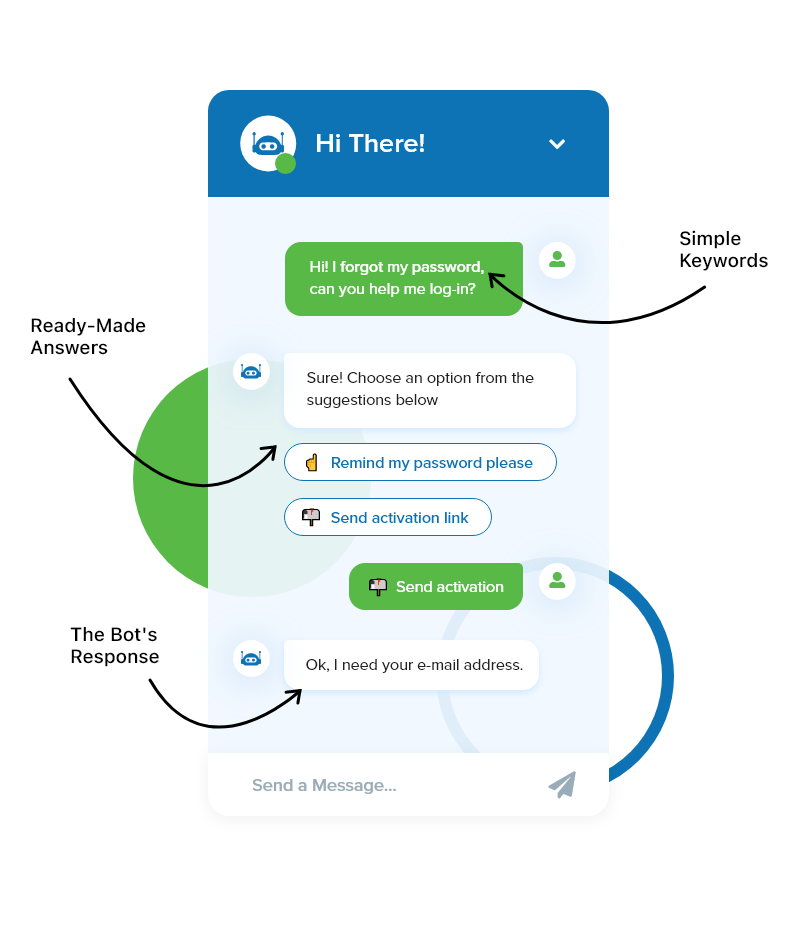
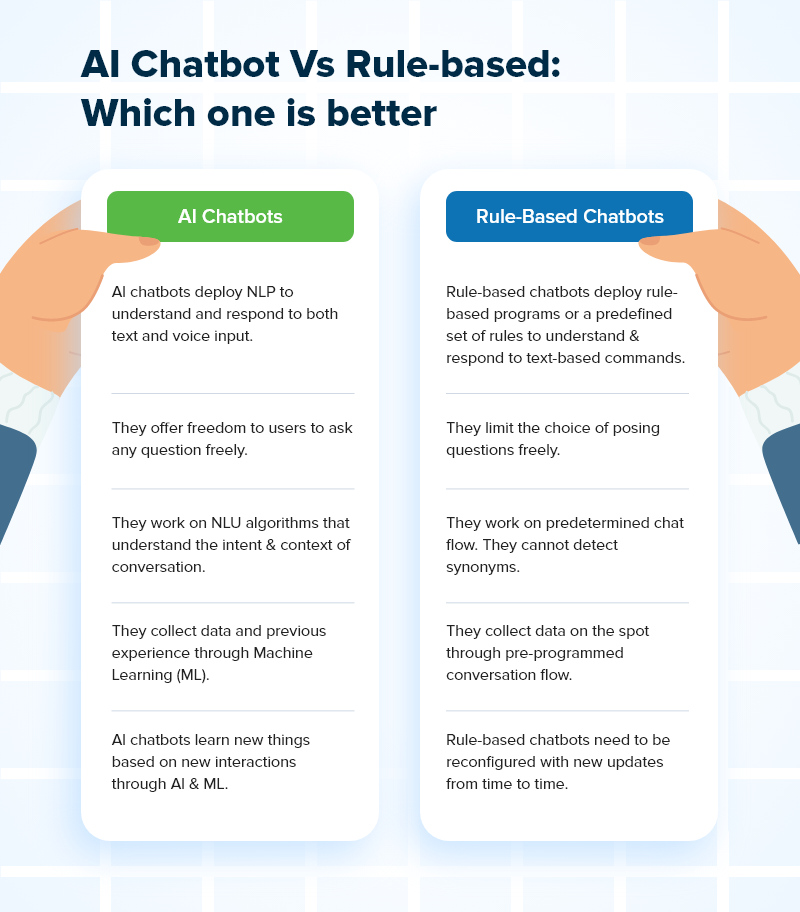
How do chatbots Work?
CHAPTER 4
How do AI Chatbots Work?
AI chatbots control and automate human conversations with the help of NLP (natural language processing) to recognize the inputs and translate their meanings. AI Chatbot has mainly 6 components based on which it works.
1. Natural Language Processing
NLP is an artificial intelligence component that enables bot to understand speeches and texts as human beings do. NLP deploys computational linguistics, machine learning, and deep learning models to drive programs that translate large volumes of texts and speeches to spoken language in real-time.
2. Automated Speech Recognition (ASR)
Automatic Speech Recognition (ASR) is a conversational AI component that facilitates human beings to communicate with a computer interface like a normal human conversation. ASR technology deploys NLP to decode phonemes and words. Therefore, NLP and ASR work collaboratively to help chatbots understand customers’ voice modulations and accents to respond to them.
3. Machine Learning
Machine Learning (ML) focuses on deploying data and algorithms to replicate human learnings and improve its accuracy. Moreover, ML algorithms are trained to make accurate predictions and drive decision-making powers.
4. Conversational UX
An intuitive Conversational UX is a key factor that determines the usability of AI chatbot. A clear and user-friendly UI & UX help users or customers to achieve their goals without investing much time.
5. Sentiment Analysis
This functionality ensures chatbot a power to gauge users or customers sentiments and mood. Sentiment Analysis allows chatbot to analyze the users’ texts & voices to understand and analyze the users’ emotions.
6. Multilingual System
Chatbot is so advanced that it can converse with every user across the globe. Thanks to the Multilingual system that gives the chatbot to understand and converse in different languages.
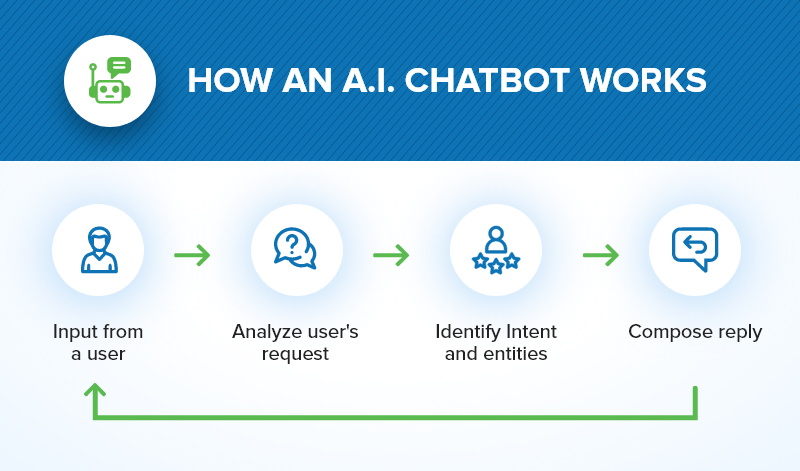
How do Rule-Based Chatbots Work?
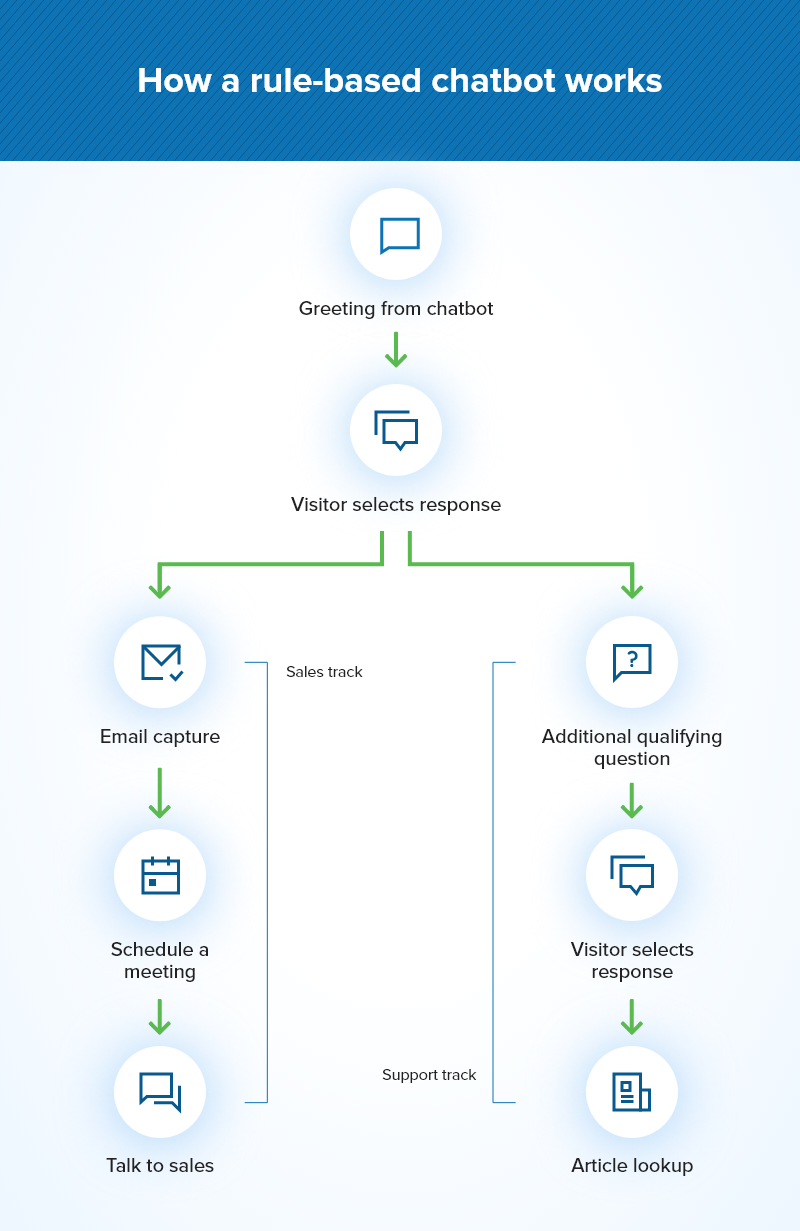
Use-cases of Chatbots
CHAPTER 5
Chatbot Use Cases in Businesses or Enterprises
For Customer Support
According to HubSpot, 93% of customers are likely to make repeat purchases with companies who offer excellent customer service. Conversational AI can be a big help for agents and customers in customer service. Strengthening the customer support services through chatbot can help you to elevate the customer loyalty towards your brand.
1. Works as first tier support
If a customer is facing any issue in achieving their desired goals then he can get instant support from your chatbot. Regardless if you are online or offline, your chatbot works as an agent and directly or indirectly guides them to achieve their goals. And if they fail to do so, they immediately notify and pass the queries to the human agents.
2. Answers repetitive and common questions intelligently
Sometimes, there are various specific areas or information that various customers inquire about from your customer support rep. like pricing plan, features, or product know-how. In this scenario, chatbots can talk to customers like humans and reduce the efforts of customer support rep(s) which in turn improves their productivity.
3. Handles transactional events
Chatbots effectively handle all transactional events, especially monetary transactions. In the banking & finance sector, chatbots facilitate their customers to pay their bills, check balance, update their cards, generate their pins and more.
For Customer Engagement
Chatbots offer a secure and interactive platform where businesses can interact with customers and engage them through personalized communication. According to the study, customers prefer prompt communications like product recommendations delivered by chatbots. On the forefront, chatbots immediate responses to the customer queries which in turn increase customer engagement along with satisfaction and help your customers to retain your business.
For Collecting Customer Feedback
Chatbot Use Cases in Marketing
1. Generates Leads With Sales Approach
The struggle of a sales team is to find and convert leads. They mainly focus on identifying the “cold leads” and contacting them to convince them and draw their attention towards the company’s products and services. But nowadays, companies have shifted their attention and preference towards “warm leads” or you can say audiences or visitors already interested in its products. These audiences have truly engaged with the company’s website and are likely to interact with sales people and buy from your company. So, instead of wasting your crucial time in finding their email ids or phone number, it’s better you contact them through chatbot on your website.
2. Builds Email Lists More Effectively
Chatbots provide a quick and engaging way to collect leads. Conventionally, the team has no choice but to use forms to acquire leads. Usually, visitors and prospects are reluctant to fill the form or simply ignore it as it ruins their experience. Chatbots have eliminated the process and formalities of form submission and give you the platform where you can directly converse with visitors and ask their likes & dislikes. Chatbots not only boost customer engagement but dramatically increase the chances to get their emails.
3. Recommends Your Products
Product recommendation is the most engaging way to maximize sales. With product recommendations, prospects or visitors do not have to think a lot about what to buy. Chatbots do exactly that. Chatbots allow you to introduce your products and services by offering a tailored experience through conversation on chatbots.
4. Promotes Your Products
While designing marketing strategies or product campaigns, you may come across different targeted audiences having different preferences and interests. Some audiences (mostly B2B) are interested in conversing with you regarding technical aspects of your products. Whereas, other types of audience may be expecting something fun like quizzes and memes. So, here it is important for you to develop and adapt those product marketing strategies that complement your audience’s needs and expectations. Chatbots provide an engaging way to achieve this goal. Chatbots allow you to send various audience-appealing product content in the form of videos, images, emojis, GIFs, memes, etc. that ignite your product recommendation efforts.
5. Improve Your Funnel Marketing
It is very tough for a company to convince or ask first-time visitors to buy their products and services. And if you do so, it may create a bad impression on a visitor’s mind or they can think you are desperate and leave your business. Instead of jumping on to convince visitors to buy products, you should first focus on what they want, it means listen to their needs and expectations. Make your visitors feel welcome on websites through the first source of connection – Chatbots. Engage with your visitors on chatbots and share different content related products.
Chatbots Use Cases in Sales
1. Works as personal shopping assistants
Your customers or shoppers are now tech savvy. Before making any purchase decision, they are likely to educate themselves about the products or services they are buying. Besides this, they also raise queries about stock availability. So, in this custom-oriented business, you need to develop and streamline the sales operations. Chatbots help you to cut extra time and resources required in an onboarding process. AI Chatbots have an ability to understand and analyze contextually. You can easily provide customers with 24X7 chatbots support to bring up product demos quickly.
2. Serves as a Sales Agent
AI chatbots allow you to create high-level automated sales agents that can perform various tasks like – booking orders, managing customers’ queries, capturing the leads, and product recommendations.
3. Provides Quotes and Estimates
Customers are always keen to know about a product’s price to make a purchase decision and make requests from you to share quotes and estimates. And this quote plays an influential role in the purchasing journey of a customer. Answering or making a quote could take a lot of time and effort of a sales agent. But chatbot can do this job effortlessly as it can directly connect to a database and quickly bring up prices for the right products.
4. Provides Faster, Secure, and Personalized Interaction
Chatbots play a crucial role in providing faster, secure, and personalized interaction to customers and improve customer service operations for business growth. Chatbots leverage your existing resources, such as knowledge base articles, demo videos, and FAQs to help answer and resolve your customers’ queries. Chatbots are always ready to answer your customers’ queries and deliver 24X7 support to your customers.
5. Automates the Answers of Repetitive Questions
Your customers ask different questions before making a purchase decision. So, different customers may have repetitive queries and questions and answering them can take a toll on your customer support agent’s productivity and time. To avoid this, you can use chatbots to talk to your customers like humans and reduce the efforts of customer support rep(s) which in turn improves their productivity. Moreover, chatbots can quickly improve customer support metrics.
Chatbots & Industries
CHAPTER 6

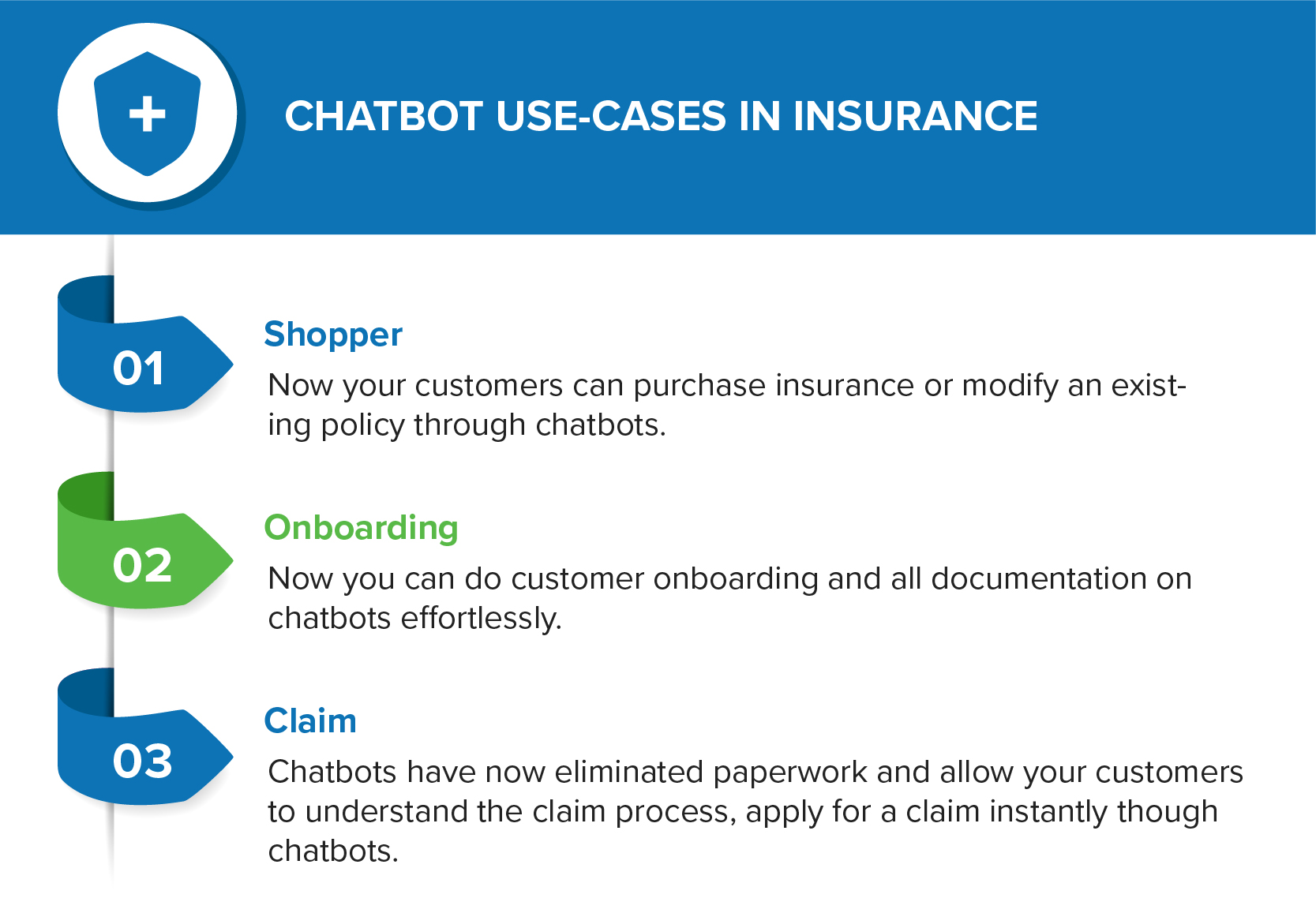
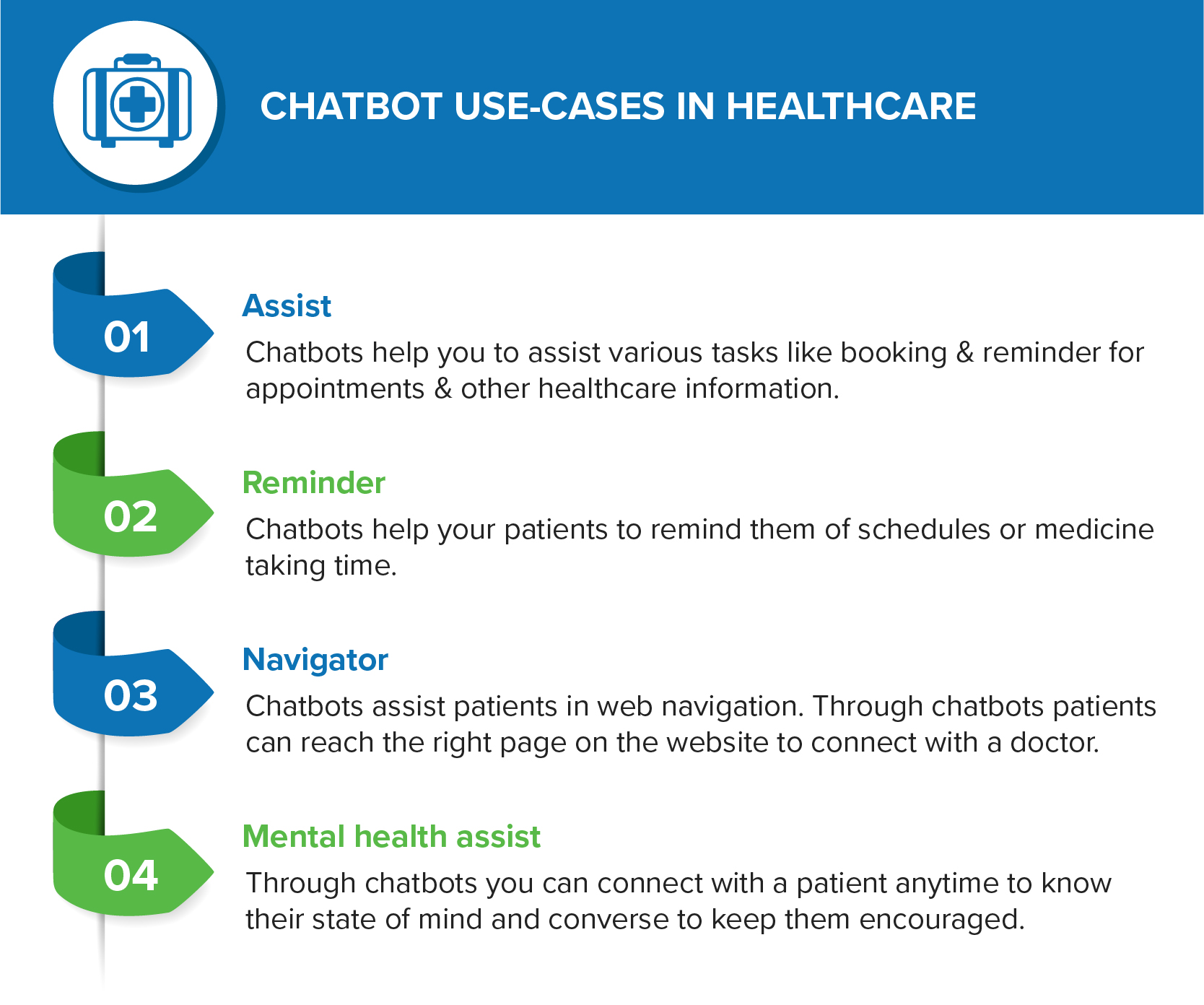
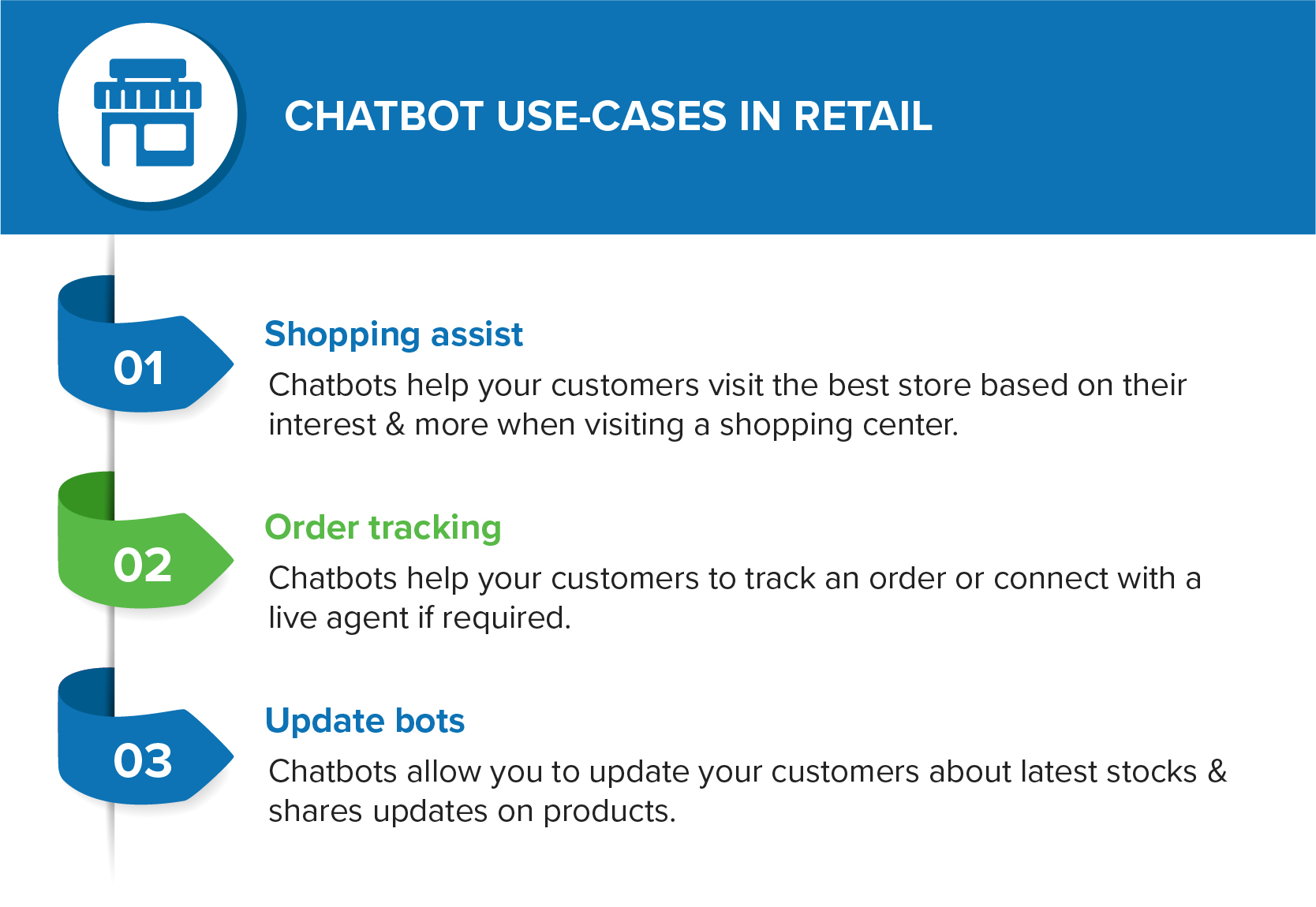
How to Choose the Best Chatbot for the Contact Center
CHAPTER 7
i. Omnichannel Support
Chatbot needs to be omnipresent and engage with customers on every channel including website, social messengers, WhatsApp and more. Since your customers are everywhere and quite active, you need to stay a step ahead to serve them.
ii. Chatbot & Human Balance
The chatbot must be smart enough to direct conversations to the human agent as and when required. The transfer should be effortless and timely; else, the business will fail to build customers’ trust with the brand.
iii. Smart Response
Chatbot should auto-generate replies from the knowledge base and other trusted sites. It should learn to reply better by understanding customers’ questions, buying patterns, journey and more.
iv. AI Support
Get a smart bot that improves every day and offers humanized and accurate replies with artificial intelligence technologies like natural language processing and machine learning. Else, the conversation will sound robotic and monotonous, forcing your customer to leave the business before time.
Checklist for Chatbots
CHAPTER 8
It is clear now: your customers around the globe prefer chatbots to connect with your brand or solve their queries. If you want to create a chatbot or look for a chatbot that can handle multiple conversations at a time, we’ve created a comprehensive chatbot checklist to quickly check if your bot has everything to deliver an exceptional customer experience.
Here's a checklist to quickly check if your bot has everything to deliver the best CX:

NovelVox’s Stand on Chatbot Automation
CHAPTER 9
Why You Need InfiBot?
There are a plethora of features like seamless chat, 24X7 availability, No IVR that make InfiBot a perfect chatbot for your business. There are other numerous benefits of making InfiBot a part of your communication.
1. Engage Across Channels
With InfiBot, you can effortlessly scale customer interactions across digital channels, including website, social & more, without increasing agents’ headcount.
2. Improve Interactions
InfiBot responds quickly, resolves a complaint, makes reservations, gives purchase ideas and does a lot more. It drives exceptional results with 24×7 presence to improve FCR and reduce AHT.
3. Automate workflow through Integrations
InfiBot offers end-to-end support with seamless integration with CRM to improve customer and employee experience.
Knowledge Base, Case Management and other 3rd party tools.
4. Engine Agnostic
InfiBot allows your business to utilize multiple chatbot engines, including Dialog Flow, IBM Watson, Microsoft and more, to manage intent/use cases.
5. Allows to Balance Human and Bot
InfiBot leverages a powerful AI engine that allows it to handle level 1 queries with ease and instantly escalate the conversation to a human agent when required/requested for seamless conversation.
Ready to Start Interacting with Customers with Chatbots - InfiBot?
CHAPTER 10
1. Instant satisfaction
Where calls and emails take a series of follow-ups and longer hold time, InfiBot makes life simpler. A query can pop-up anytime in a customer’s head, and he looks for an immediate solution. A brand that does so becomes a customer’s favorite.
2. Convenience
Businesses believe customers look for convenience when it comes to experience. Product and price are secondary to them. Here convenience means the customer wants the brand to support them across communication channels. A well-integrated system boosts InfiBot potential that never lets a customer leave unattended and assure great consistency for the business.
3. Engagement
Today, customers expect more than just a reply to their queries. What grows the relationship or bond between customer and brand is engagement.
This includes Interacting customers across social media channels, ensuring personalized experience, and informality strengthen the relationship between customers and brand. InfiBot is excellent at this. It avoids robotic replies stored in the program and deploys Natural Language Processing (NLP) to the solution to justify the absence of a real agent with their emotive tone imitated from human conversational norms.

Ready to uplevel your customer experience and convert more leads?
Schedule a demo today to learn how you can close more sales, retain more customers and get more referrals











